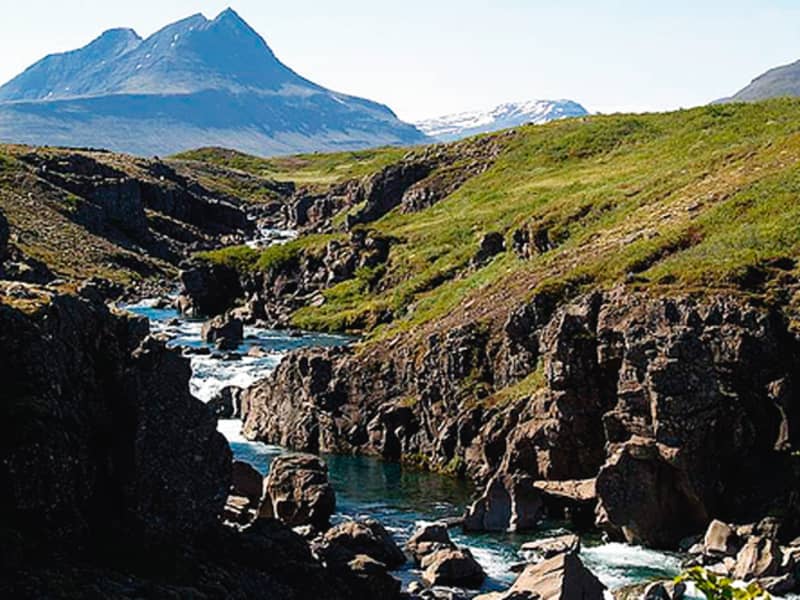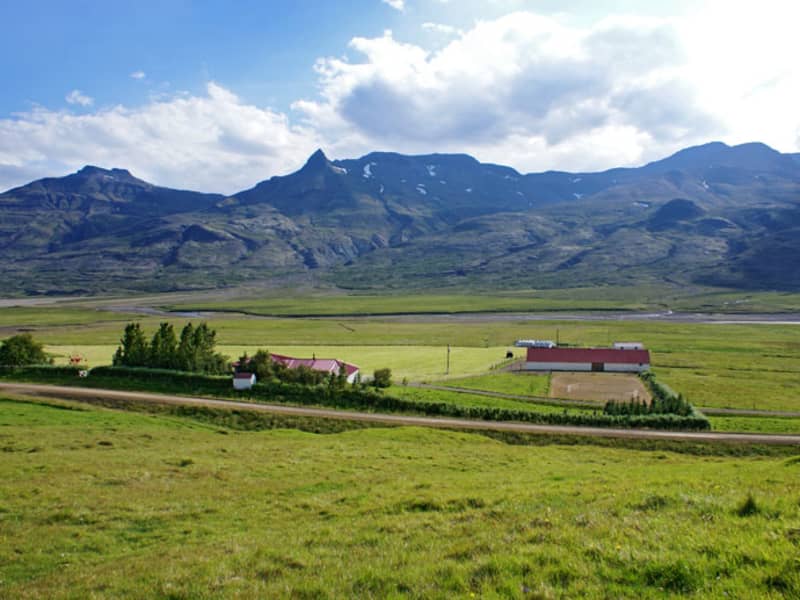Breiðdalseldstöð
Breiðdalur central volcano is an ancient volanic area above Breiðdalur valley and Berufjörður. It was the object of extensive research carried out by the English geologist George D.L. Walker who made East-Iceland teritary volocanologic phenomenons the main object of his professional work. The Breiðdalur area of volcanism is set with rhyolithic-inserts producing the mainstay of majestic mountain range searating Breiðdalur and Berufjörður, e.g. Mt. Flögutindur, Mt. Smátindar, Mt. Röndólfur, Mt. Slöttur and Mt. Stöng. The southern side of the volanic formation is highly colorful and the instrusions assume an irregular aspect, set with tephra-layers.
The site of the central volcano extends between Mt. Fossárfjall, south of Berufjörður to Mt. Bæjartindur, which towers above farm Þorgrímsstaðir in Breiðdalur. The western slope runs along Mt. Ófærunafir towards the west, whereas the eastern side - although highly eroded - extends east of Mt. Kerlingartindur, S-Breiðdalur. The southern region of Breiðdalur - the very centre of area - forms a basin where the excruciating heat has transformed the rock to such an extent that the basalt and the andestite have turned pale-green, making it problematic to tell them apart from the rhyolite. This can be clearly detected at river Innri-Ljósá Blágil ravine.
The beforementioned chain of mountains was formed at a later date as the rhyolite wielded its way to the surface through the basalt layers, forming insertions on top of the massive tephra layers along the edges of the crater. Their remnants are visible in rhyolithic-rocks throughout the Breiðdalur region. This central volcano is considered to be of later date than its Álfta- and Reyðarfjörður counterparts. The Reyðarfjörður ignimbrite, a pyroclastic flow made as a burning hot mixture of about 430 km2 with a diameter of about 6 m. thickness. This layer is linked the Mt. Skessa south of Reyðarfjörður, best known as the Skessulag. The immense volcanism of the area has resulted in a great variety of rare minerals and semi-precious stones on display at Petra´s wonderful stone collection in Stöðvarfjörður and the Breiðdalur miniral museum in Breiðdalsvík.
View




